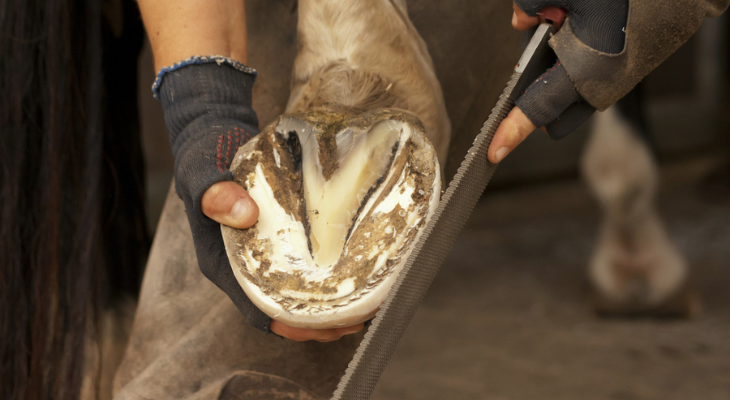
Hoof Diseases and Injuries That Could Affect Your Horse
Your horse's hooves are tough enough to handle all sorts of conditions and terrain, yet are still susceptible to injuries and diseases. Hoof problems are particularly common in equines, affecting 85% of horses in a study conducted in the Netherlands. Hoof injuries and diseases your horse might be at risk of developing include:
Laminitis
Laminitis occurs when the tissues that connect the coffin bone to the wall of the hoof become inflamed. Poor blood flow to the laminae causes this condition. Without treatment, the coffin bone can separate from the hoof wall. If this happens the bone may drop and might even protrude through the horse's foot.
Horses that are overweight or naturally heavy are more likely to develop laminitis. Your horse may also be at increased risk due to eating a diet high in grain, exercising or training too vigorously on hard surfaces, or eating black walnut shavings. Horses that take certain medications, have Cushing's syndrome, or increased sugar intake due to grazing on lush pastures may also be more likely to develop laminitis.
Treatment is aimed at treating pain and preventing lameness from becoming permanent. Your equine veterinarian may prescribe pain medications, stall rest, boots,
or ice baths. Trimming the hoof and re-shoeing can decrease pressure and help improve your horse's comfort. Keeping your horse away from lush pastures can also be helpful.
Puncture Wounds
Stepping on a sharp object isn't the only potential cause of a puncture wound. Wounds can also occur due to the incorrect placement of horseshoe nails. Nail bind occurs when the farrier places a nail too close to the laminae, while nail prick happens when the nail penetrates the laminae.
Prompt removal of the object can reduce the risk of infection. Your farrier will need to remove the shoe if nail bind or nail prick is the problem. The shoe should remain off until the foot heals completely.
Any puncture wound, regardless of the cause, can become abscessed. Abscesses are bacterial infections that require immediate treatment.
If the puncture wound isn't deep and drains well, antibiotics may not be needed. Paring the foot and flushing the wound can encourage drainage. Protect the horse's foot from bacteria by keeping it in a boot while it heals. If the puncture is deep, your equine veterinarian may recommend surgery in some cases.
Hoof Bruises
Bruises can develop if your horse walks across a rocky piece of land, steps on something hard, or if a horseshoe doesn't fit properly. If the bruise develops on the back of the hoof, it's called a corn.
Bruises usually begin to improve after a few days of rest. If your horse seems to be in pain, anti-inflammatory medication and ice can be helpful. Frequent bruises could be caused by shoeing issues, terrain type, or hoof conformation, according to Equus. Thicker shoes and hoof pads or pour-in pads may help your horse avoid bruises in the future.
Cracks
Cracks in your horse's hoof aren't always a cause for concern, particularly if they're shallow. Unfortunately, deep cracks can lead to lameness and infections. Sand cracks are particularly common. These cracks run down the wall of the hoof, starting at the coronary wall at the very top of the hoof.
Trimming the cracked hoof will help it heal. You may also need to ask your farrier to redistribute the weight on the hoof by re-shoeing the horse. If the crack is large or affects the stability of the hoof, your veterinarian may seal the crack with hoof repair material and apply a patch. Antibiotics will be needed if the crack becomes infected. A bar shoe (shoe with a closed heel) will help keep the hoof stable while the crack heals.
Are you concerned about a hoof problem with your horse? Contact our office to schedule a visit with the equine veterinarian.
Sources:
Equus: Why Hoof Bruises Happen, 1/29/21
Horse & Rider: Seven Worst Mistakes in Equine Hoof Care, 4/16/20



